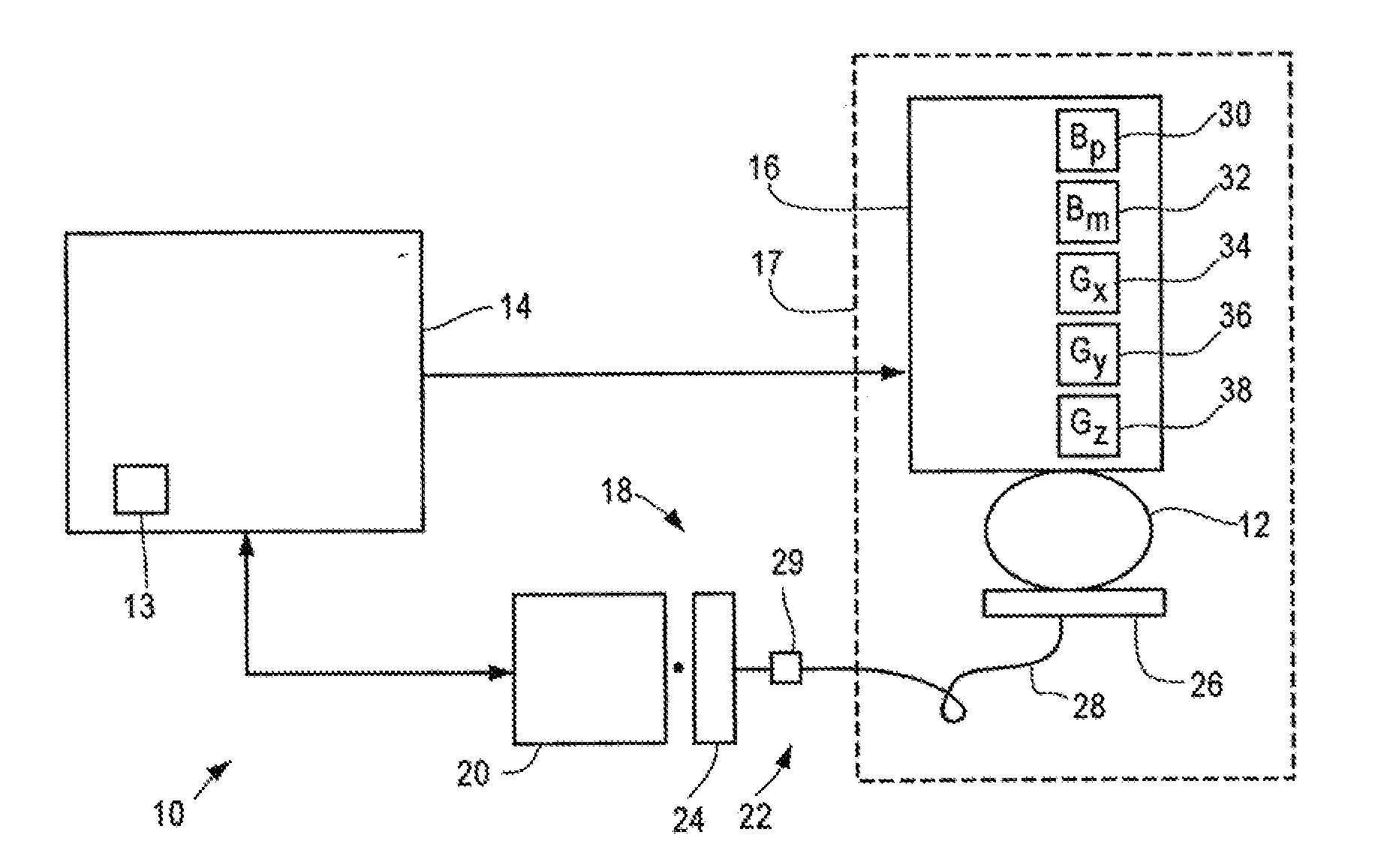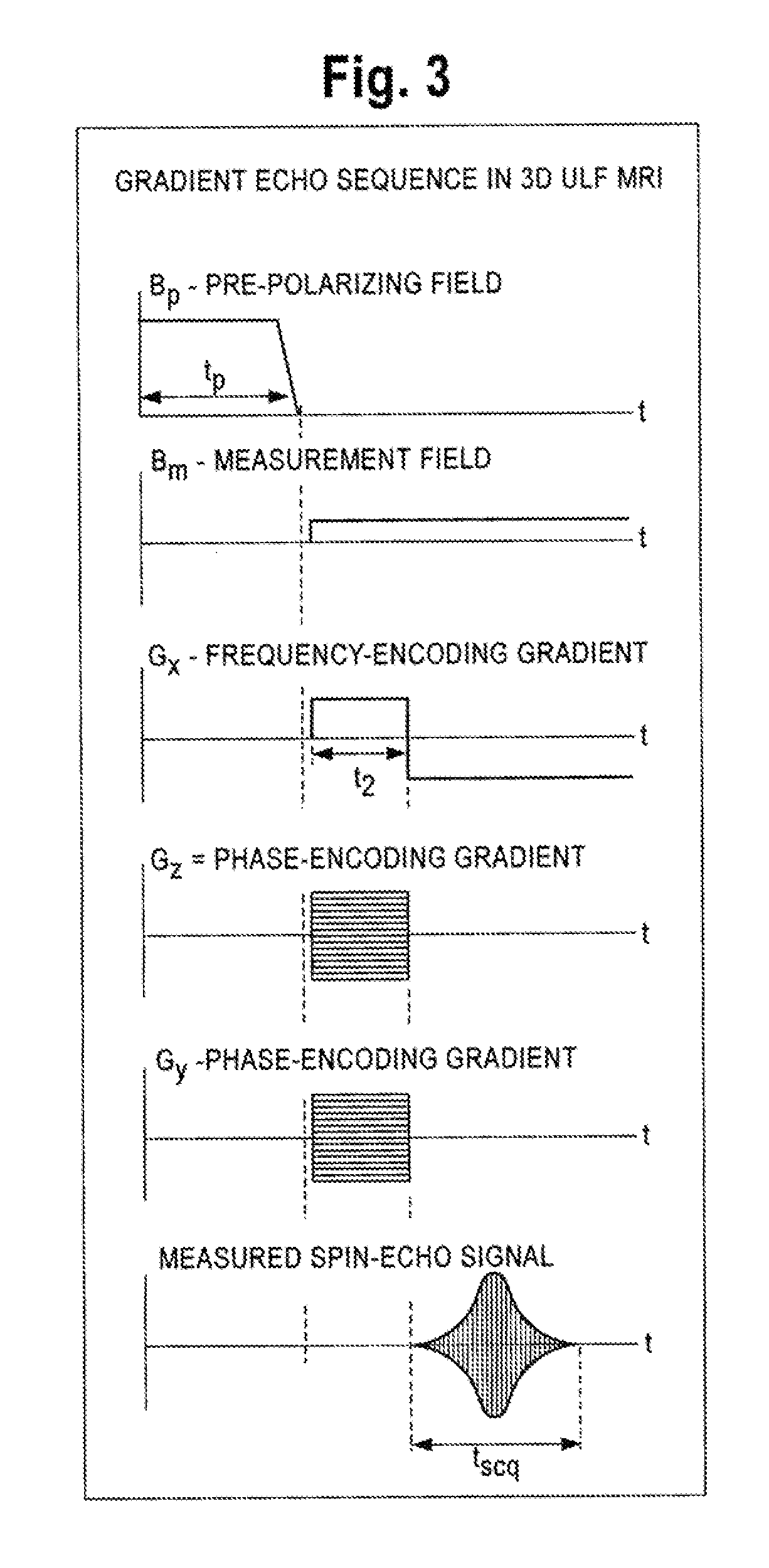Method of performing MRI with an atomic magnetometer
a magnetometer and atomic magnetometer technology, applied in the field of magnetic resonance imaging (mri), can solve the problems of high risk factors, death and injury, and exam can take a very long time,
- Summary
- Abstract
- Description
- Claims
- Application Information
AI Technical Summary
Problems solved by technology
Method used
Image
Examples
Embodiment Construction
[0013]FIG. 1 is a block diagram of a MRI system 10 shown generally in accordance with an illustrated embodiment of the invention. The system 10 may be used to form two or three dimensional image of object 12. The object 12 may be a person, an animal or inanimate objects.
[0014]The system 10 is a non-cryogenic ultra-low-field (ULF) magnetic resonance imaging (MRI) system based on the use of an atomic magnetometer (AM). The system 10 is useful for general biomedical imaging. Ultra-low-field means a magnetic field in the microtesla range. ULF MRI can supplement conventional MRI scanners (i.e. those operating at magnetic fields >1 Tesla) in various applications where high fields are limiting factors. ULF-MRI systems have numerous advantages such as compatibility with magnetoencephalography (MEG), simplified magnetic field generation and field homogeneity requirements, narrow NMR linewidths, decreased susceptibility artifacts, variable field measurements, and the possibility of enhanced t...
PUM
 Login to View More
Login to View More Abstract
Description
Claims
Application Information
 Login to View More
Login to View More - R&D
- Intellectual Property
- Life Sciences
- Materials
- Tech Scout
- Unparalleled Data Quality
- Higher Quality Content
- 60% Fewer Hallucinations
Browse by: Latest US Patents, China's latest patents, Technical Efficacy Thesaurus, Application Domain, Technology Topic, Popular Technical Reports.
© 2025 PatSnap. All rights reserved.Legal|Privacy policy|Modern Slavery Act Transparency Statement|Sitemap|About US| Contact US: help@patsnap.com



